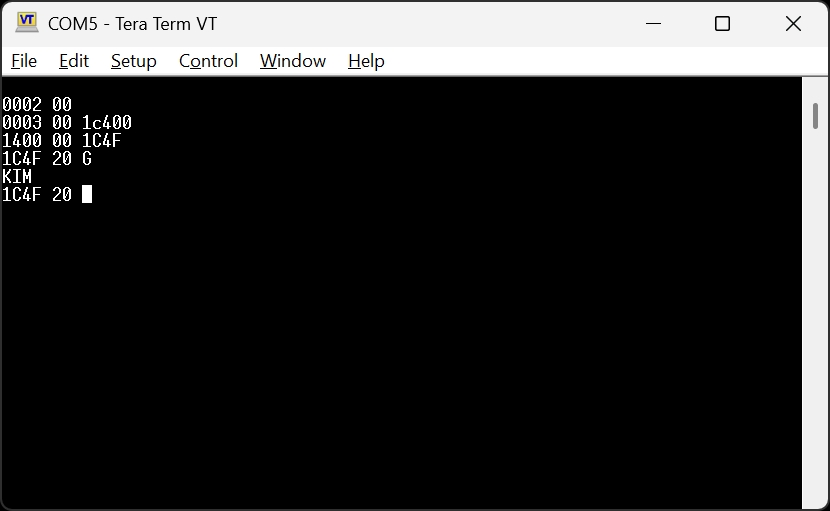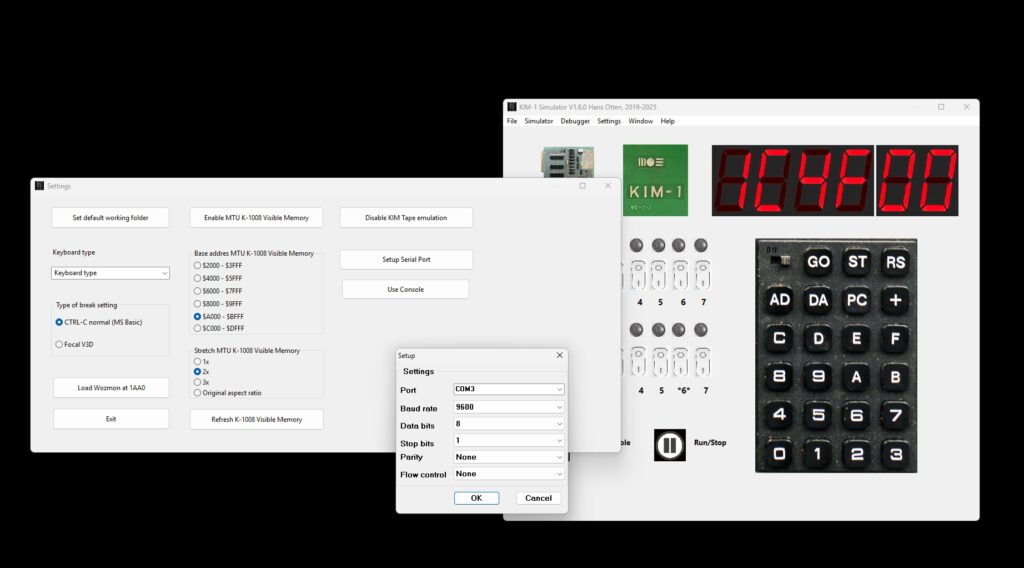Category Archives: kim-1
KIM-1 Marquee
This has been waiting some time to be published.
Udo Juerss wrote in 2024 a program KIM-1 Marquee to display running text wit a near complete alphabet on a KIM-1 or clone LED display.

See also:
KIM-1 connectors: beware the Chinese cheap variants!
Magazines: Compute! and Compute II
All documents in the MTU pages are now clean and higher quality, about 50 new PDFs.
Focal-65 V3D for TIM and KIM-1
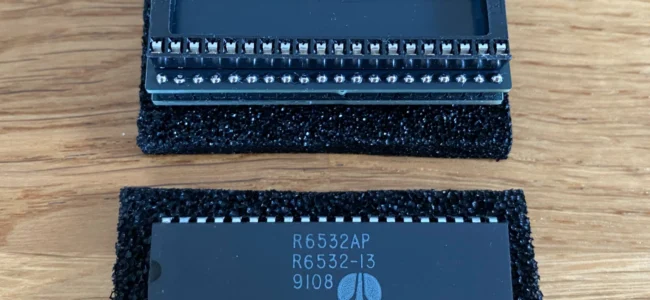
KIM 6530 replacement board
Christer from Sweden built an Eduardo Casino designed KIM-1 replica. And as we know, the 6530 replacement is an issue.
Not only for replica’s also for broken original KIM-1s.
So he designed his own, more compact original looking adapter.
He created this adapter because he wanted something that would work and look a little more unobtrusive than the other adapter boards that are available but still look somewhat genuine (no FPGA). The design is inspired by the Corsham 6530 replacement board but made way smaller by using SMD components and stacking the 6532 on top of the adapter board.
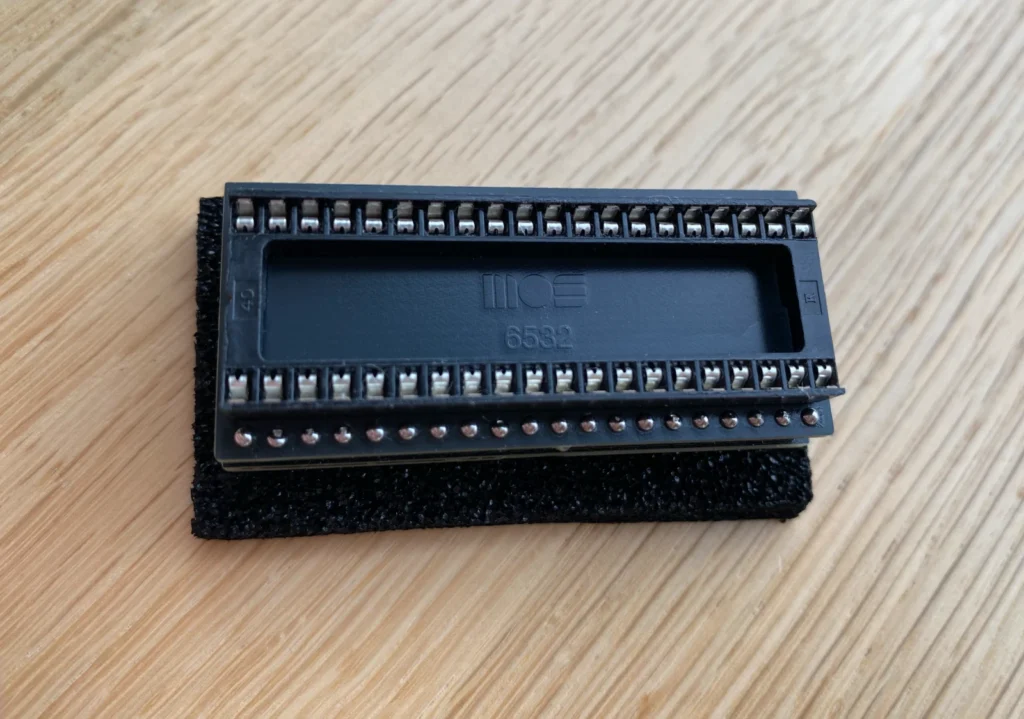
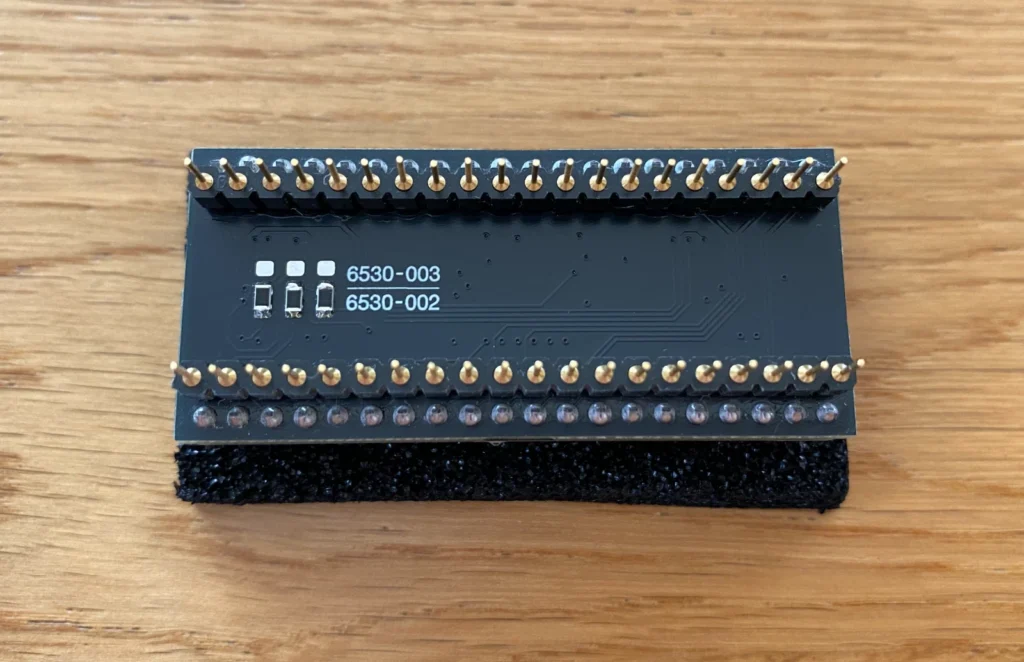
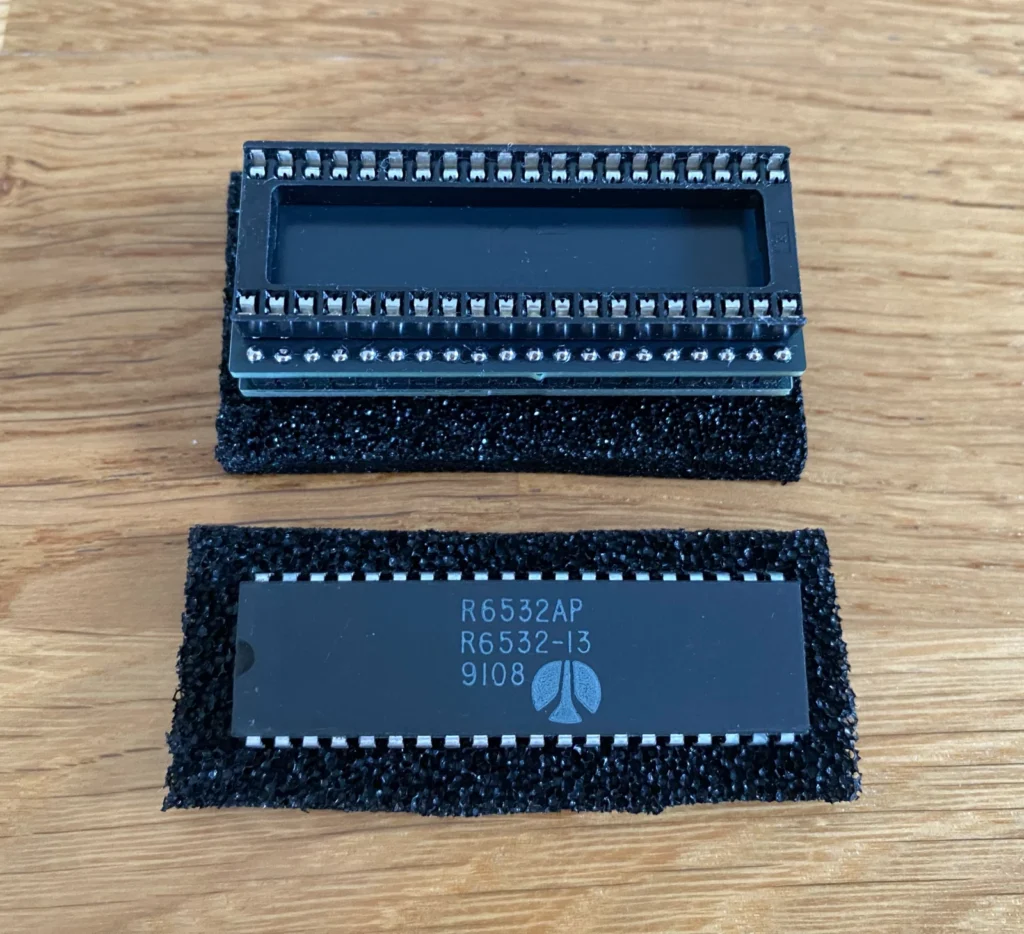
A newer design promised to be much more compact.
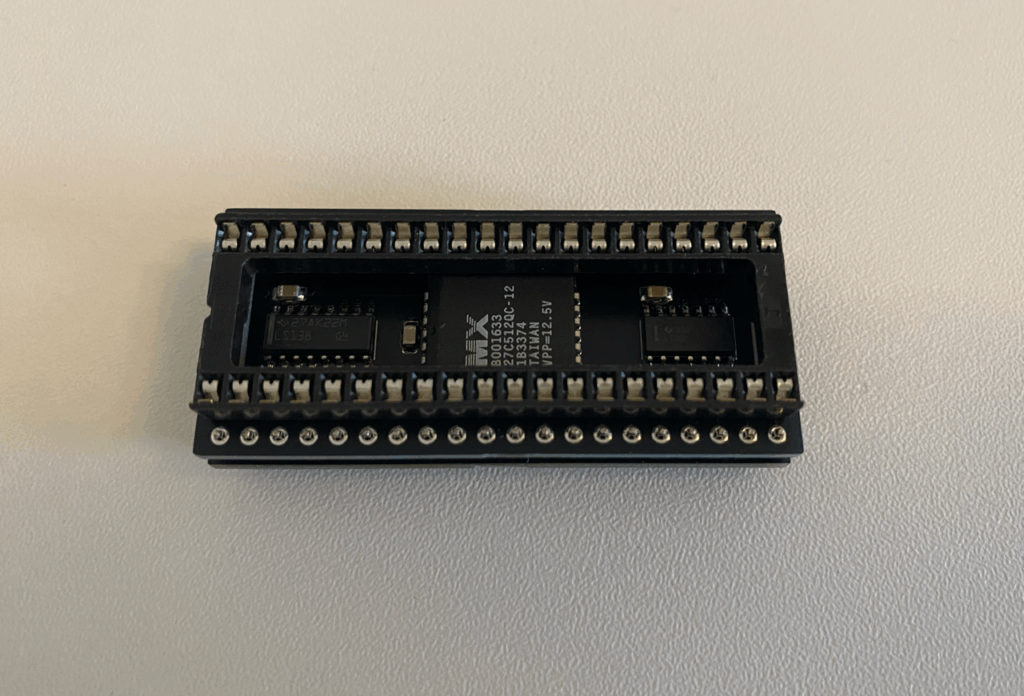
See also:
History of the TIM in the Jolt
Jolt software
Images of the Jolt
Jolt with a 74154 decoder
KIM-1 Simulator 1.5.4 published
A fresh version of the simulator.
New functionality
1. The audio tape routines interception can be switched off and on in settings. So no more popups if browsing in the -003 ROM
2. The console window stays open untouched when the LED display is chosen. When switched back to the LED display, the LED lights up again. More close to the KIM-1.
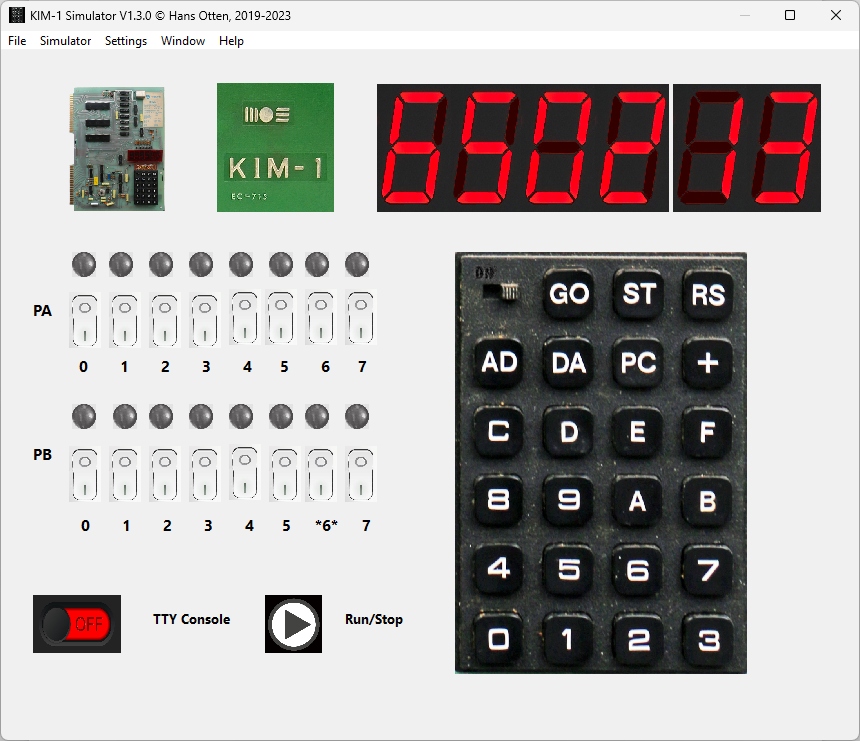
See also:
KIM-1 connectors: beware the Chinese cheap variants!
Magazines: Compute! and Compute II
All documents in the MTU pages are now clean and higher quality, about 50 new PDFs.
Focal-65 V3D for TIM and KIM-1
Testing my 6530 collection
I have a small collection of the MOS 6530 RRIOTs as made by MOS Technology.
Mask programmed, ROM and also ports can be used as chip select. See the 6530 pages!
I have tested my 6530s with the excellent Backbit Chiptester Pro V2.
6530-002 black all tests passed and ROM dumped OK, confirmed to be the 002 ROM, main KIM-1
6530-002 ceramic all tests passed, ROM test fails
6530-003 black all tests passed and ROM dumped OK, confirmed to be the 003 ROM, audio cassette KIM-1
4x 6530-004 all tests passed, except the PORT B and no ROM dumped, TIM
3x 6530-005 all tests passed, except the PORT B and the ROM (which is to be expected, the 005 has no ROM)
2x R6530P/R3004-11 all tests passed, except the PORT B and no ROM dumped, pinball
2x 6530-24 all tests passed a except the PORT B and no ROM dumped, Commodore diskdrives
I also tested a 6530 replacement, built with a 6532 and some glue logic and an EEPROM, both 002 and 003 variants tested OK.
SO I suppose all these 6530’s except the ceramic 6530-002 are all right. The Port B test fails, since the 6530-002 and 6530-002 use pin PB6 for a chip select and the others may have this as I/O pin. Now waiting for an answer of the Backbit Chiptester Pro to my query about Port 2 testing.

See also:
KIM-1 connectors: beware the Chinese cheap variants!
Magazines: Compute! and Compute II
All documents in the MTU pages are now clean and higher quality, about 50 new PDFs.
Focal-65 V3D for TIM and KIM-1

KIM-1 revisions, what changed?
I know of seven KIM-1 revisions, labeled Rev A-G and the first one unlabeled. Rev C is unknown!
What changed between these revisions?
Not much. The PCB underwent several changes around the logo area, from KIM-1 MOS to Commodore C-MOS. That happened from Rev A to Rev D, indicating the takeover by Commodore of MOS Technology. And some small numbers/artefacts etched in various Revs.
Some have serial numbers, the first ones on the back on the right, later had stamped/written numbers like PAxxx (Palo Alto) and SCxxx (Santa Clara) of Commodore production facilities
There was a change in the PCB from Rev A to B.
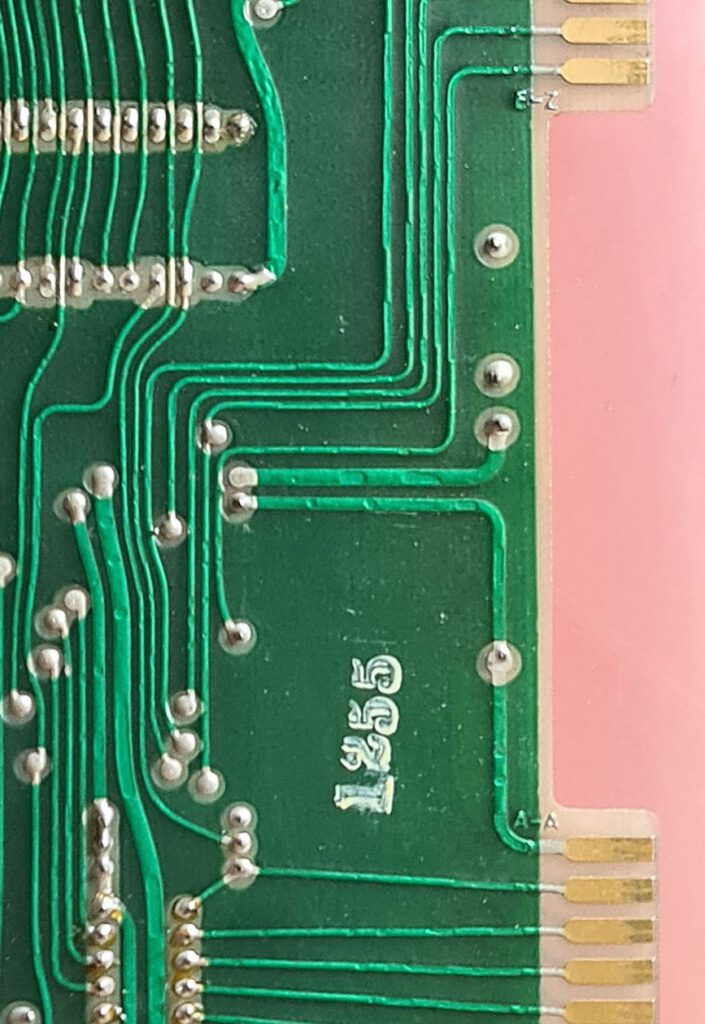
Rev A
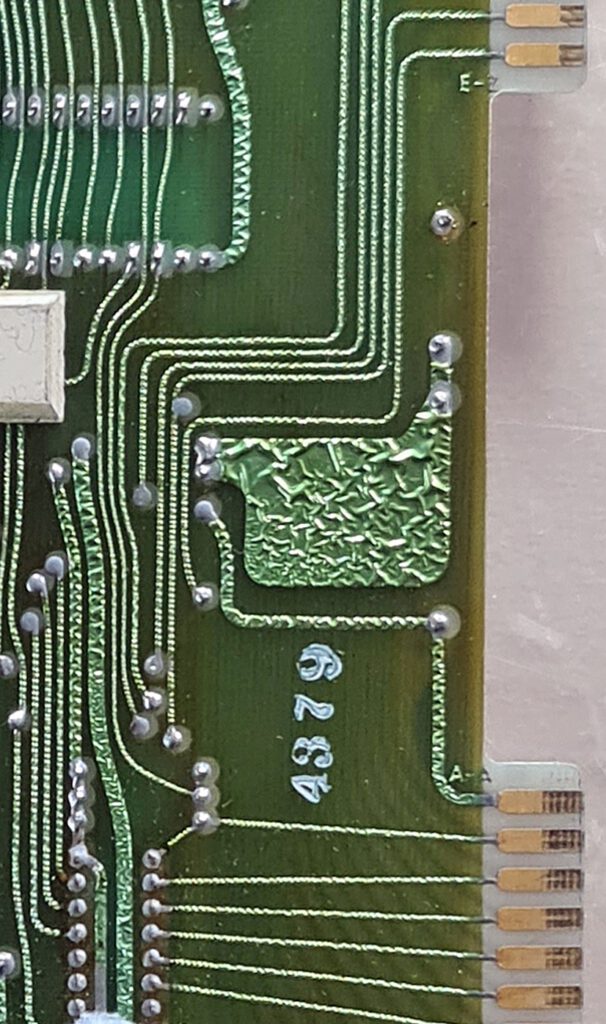
Rev B
Another change appeared going from Rev B to Rev D. The keyboard changed, the SST switch moved to the other side. And there were some extra holes required for the new keybaord, some traces needed to move also.

Rev A front keyboard

Rev A back keyboard
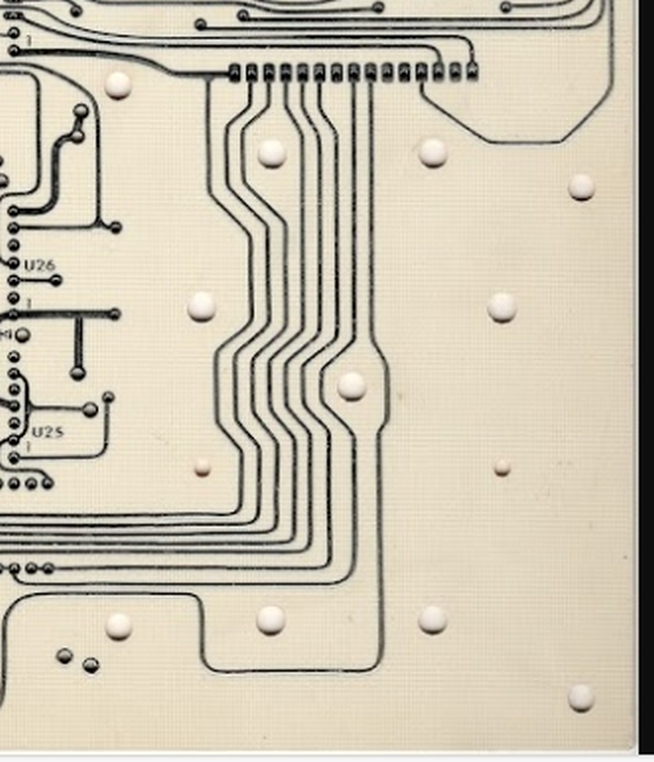
Rev D front keyboard
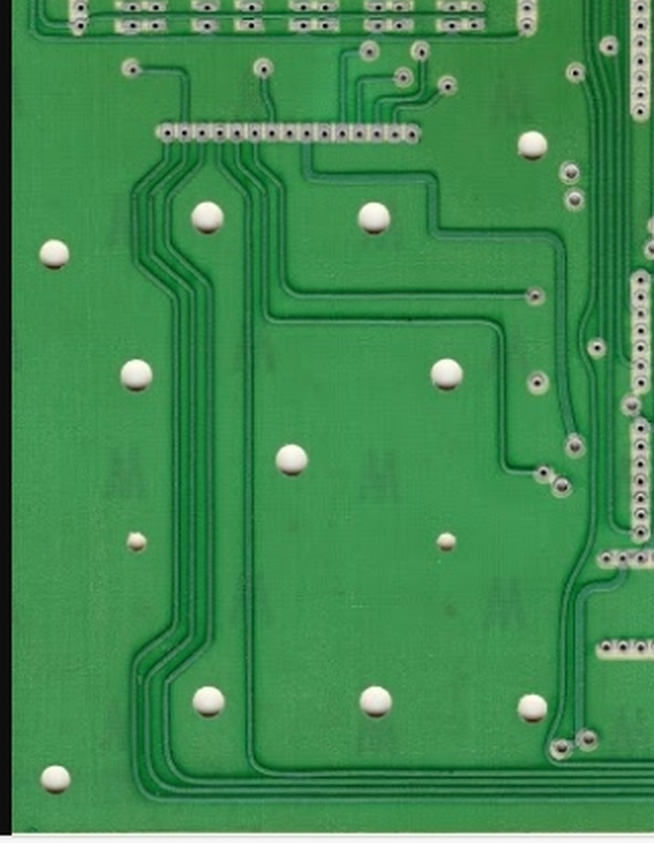
Rev A back keyboard
The User Manual went from version 15 (January 1976) to 15A (March 1976) to 15B (August 1976) without significant changes, mostly typing errors and the change of keyboard from Rev B to Rev D.
The keyboard changed from rev B to Rev D. The SST switch moved to the other side, the first Rev keyboards were not very reliable.
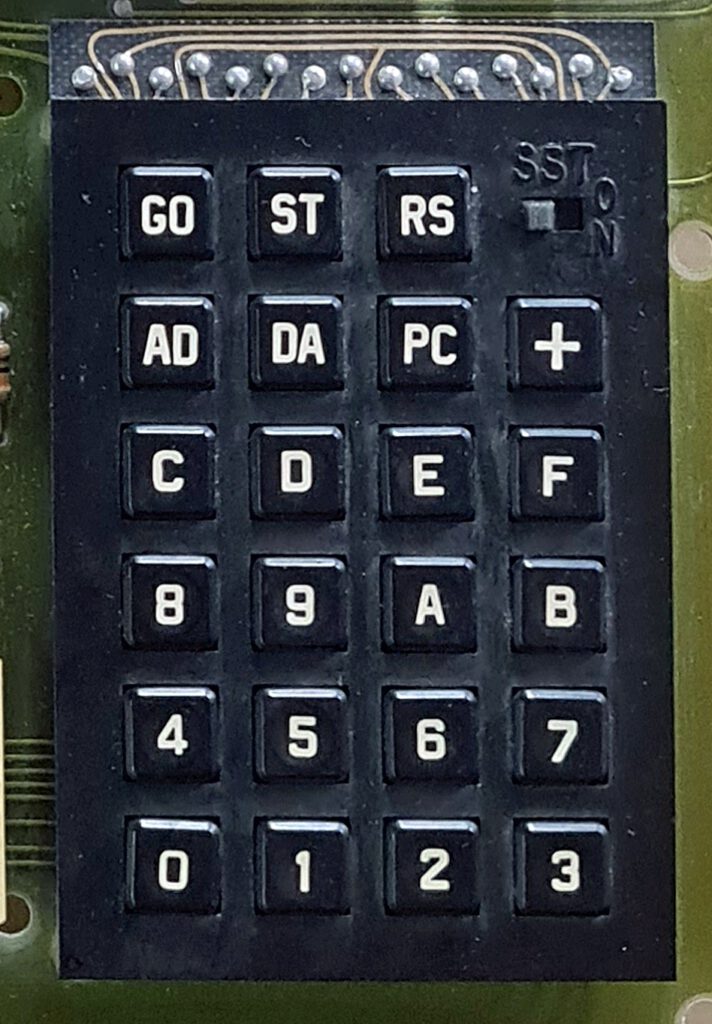
Rev B
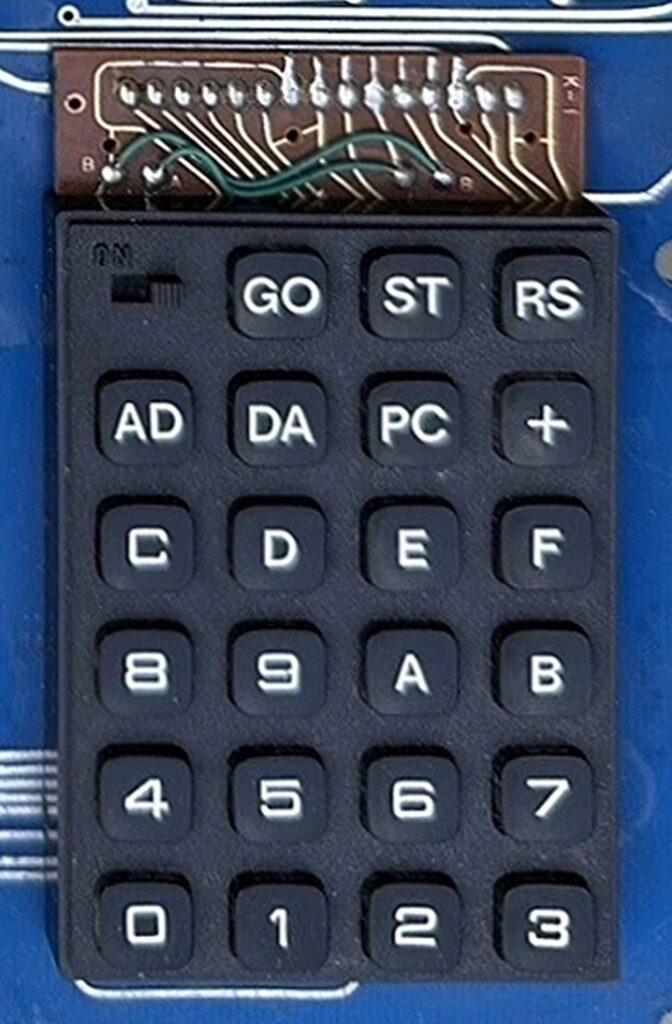
Rev D
What did not change?
The 6530 – 002 and -003 were from many different dates between 1976 and 1980. The functionality stayed the same, no software changes are known. It seems the same mask was used to produce another batch due to the demand for KIM-1s. On Rev F and G I have seen older 6530s (ceramic ones) from much earlies dates, old stock being used?
The large Circuit Diagram poster stayed the same for all revisions as far as the circuit itself. Colors changed to only blue background in the last revisions.
Parts used
The parts used in all these revisions changed from as much as possible made by MOS Technology (6102) to industry standard compatible types (2102). E.g the RAM ICs were all third party in later revisions.
The capacitors, mostly yellow tube types, also came in various colors and sources between revisions.
Except for Rev G no IC sockets were used.
See also:
History of the TIM in the Jolt
Jolt software
Images of the Jolt
Jolt with a 74154 decoder
6530 replacement board
Christer from Sweden built an Eduardo Casino designed KIM-1 replica. And as we know, the 6530 replacement is an issue.
Not only for replica’s also for broken original KIM-1s.
So he designed his own, more compact original looking adapter.
He created this adapter because he wanted something that would work and look a little more unobtrusive than the other adapter boards that are available but still look somewhat genuine (no FPGA). The design is inspired by the Corsham 6530 replacement board but made way smaller by using SMD components and stacking the 6532 on top of the adapter board.



A newer design promised to be much more compact.

See also:
KIM-1 connectors: beware the Chinese cheap variants!
Magazines: Compute! and Compute II
All documents in the MTU pages are now clean and higher quality, about 50 new PDFs.
Focal-65 V3D for TIM and KIM-1
Circuit Diagram Poster, KIM Hints, First Book of KIM
While suffering from a bad cold I tried to entertain myself with essential KIM-1 documentation that needed version information and a good cleanup of the scans.
Circuit Diagrams, the big poster. Every KIM-1 came with one. I have several of them. As far as I can see the contents stayed the same trough the years. What did change was the paper it was printed on, from heavy carton to flimsy paper. And the 1977 version had different background colors, blueish.
There was some version information on the posters. 1975, 1976 3.2 m 11-76, 1976 4m3-76, 1977 5m 1-77. And the Rockwell branded one of course had the Rockwell imprint.
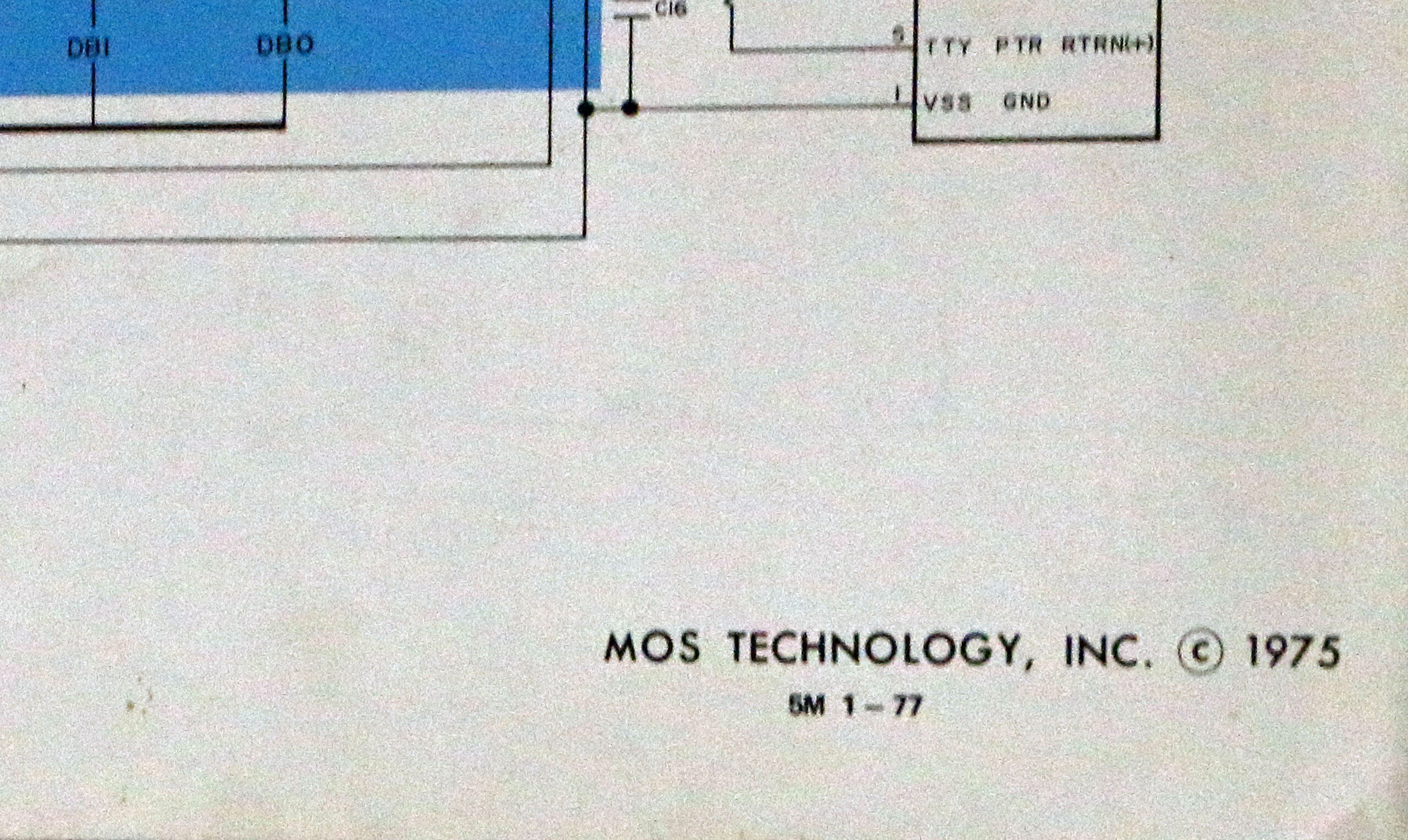
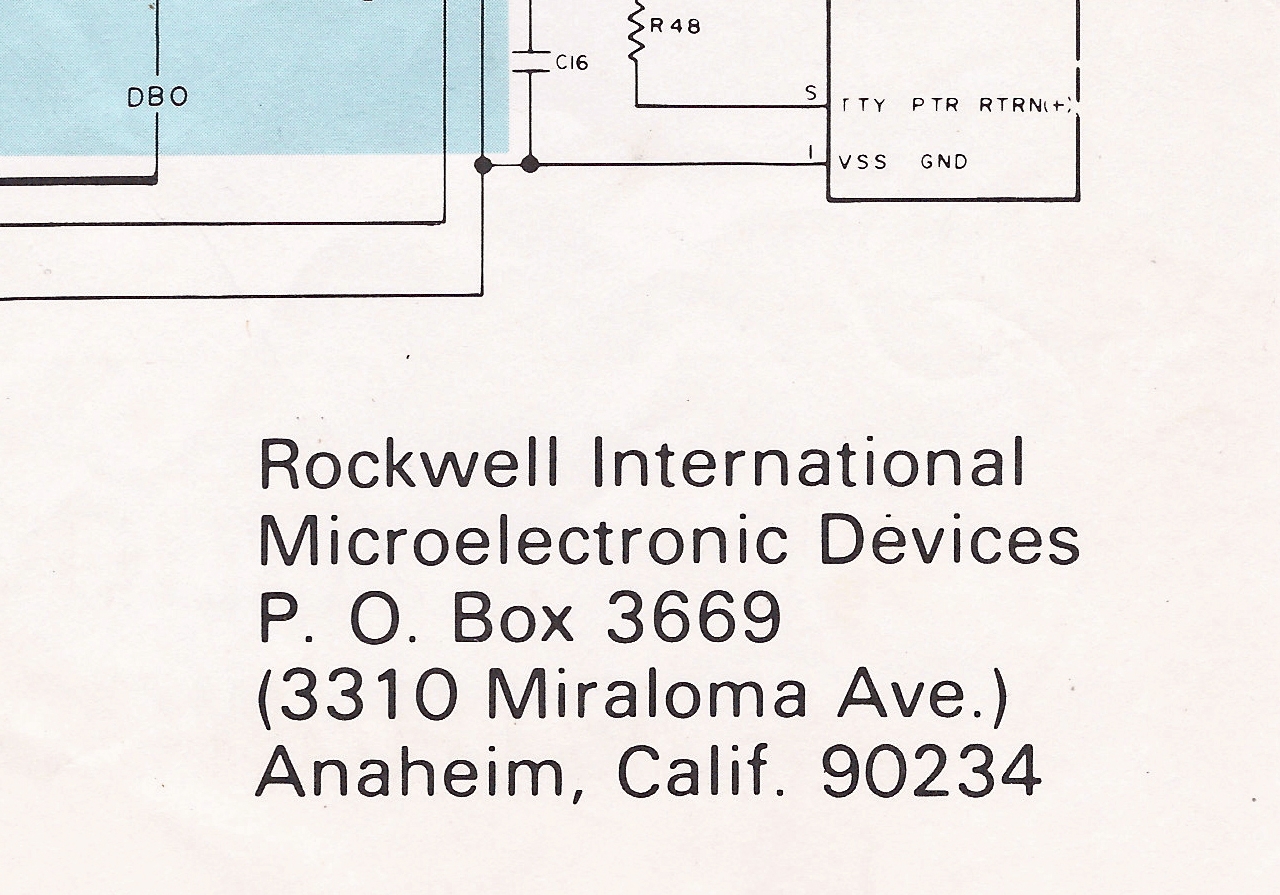
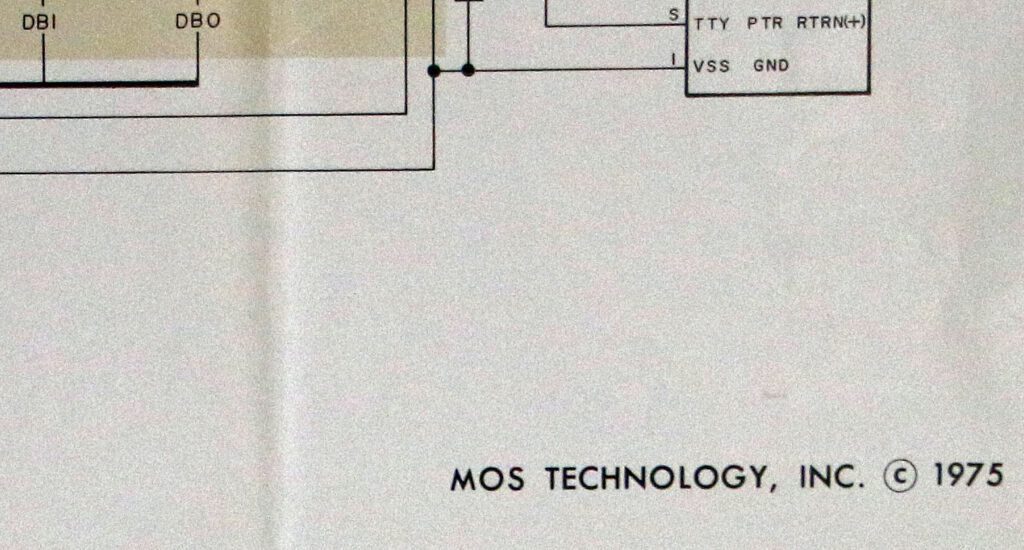
All can be seen on the new KIM-1 circuit Poster page, with high quality scans also.
KIM Hints, I have two versions, one with a greyish cover, the other pure black and white. Contents seem identical. An essential companion to the KIM-1 User manual.
Newly scanned in high quality here.
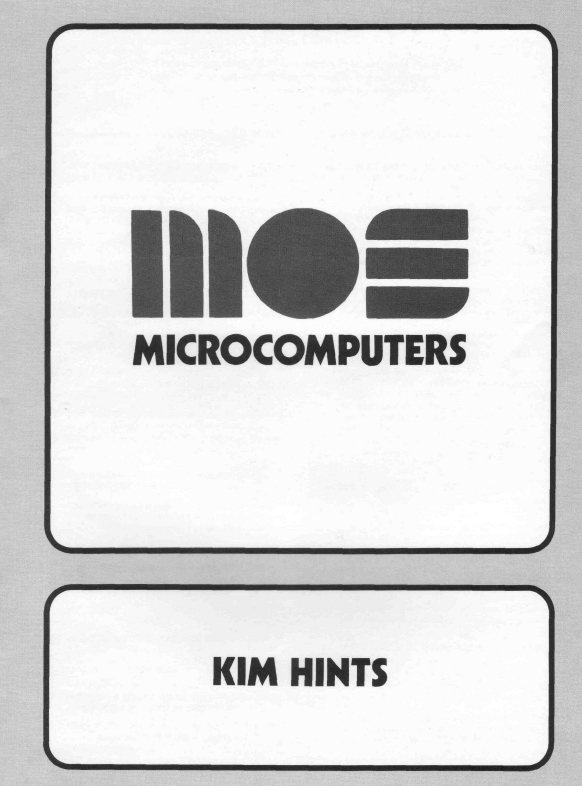
Every KIM-1 user had to have the First Book of KIM. Written by Jim Butterfield, Stan Ockers and Eric Rehnke (and many other authors!), first published 1977.
Invaluable source of information on programming the standard KIM-1. Background, games, utilities such as Hypertape.
Many reprints, many publishers.
The scan I had was done very bad, and that was the only scan ever made it seems. That had to be improved upon, it is such an essential book for the KIM-1..
Two versions are now scanned in high quality, the 1977 edition and the 1977,1978 edition (Hayden Book Company). In the later version many errors were corrected.
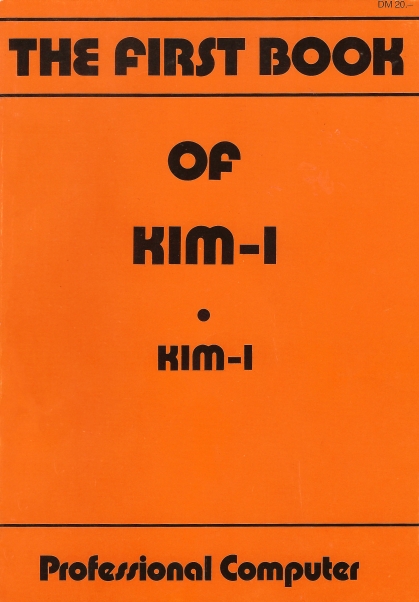
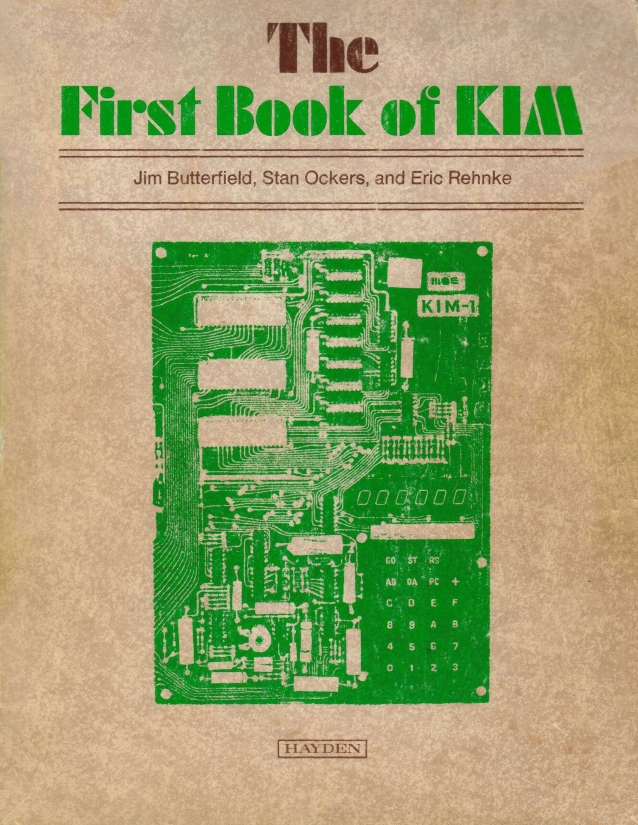
See also:
KIM-1 connectors: beware the Chinese cheap variants!
Magazines: Compute! and Compute II
All documents in the MTU pages are now clean and higher quality, about 50 new PDFs.
Focal-65 V3D for TIM and KIM-1
KIM or KIM-1 which is what?
MOS Technology started development of the 6530 RRIOT very early after/during the 6501/2 development. All in 1975.
The first version of the Hardware Manual has this mention of KIM and TIM:
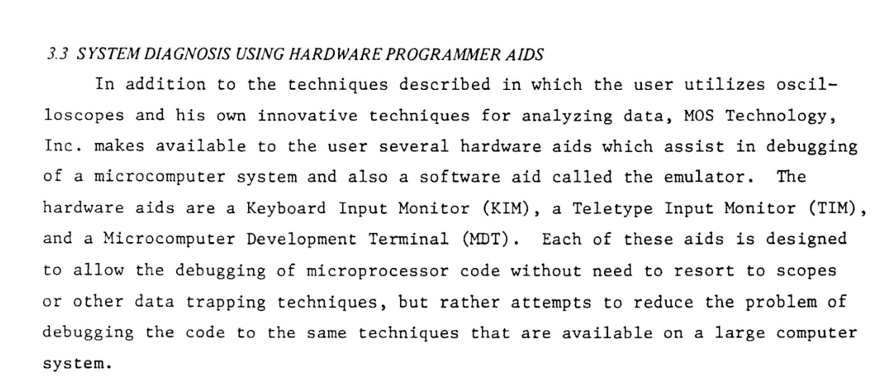
The KIM and TIM were mentioned as Keyboard and Teletype Input Monitor, indicating these are the 6530-002 and 6530-004 RRIOT IC’s. Indeed these ICs were sold later on.
The KIM-1 computer was developed later, with the KIM RRIOT and the 6530-003 audio cassette interfacing ROM using the KIM 6530-002 RAM and I/O ports.
The KIM-1 was not called -1 as first version, but for the 1K RAM included on the computer.
First shipping of the KIM-1 started in early 1976, then the first articles in the magazines and advertisements appeared.
So KIM is the 6530-002 RRIOT IC, KIM-1 is the computer around the KIM and 6530-003.
See also:
KIM-1 connectors: beware the Chinese cheap variants!
Magazines: Compute! and Compute II
All documents in the MTU pages are now clean and higher quality, about 50 new PDFs.
Focal-65 V3D for TIM and KIM-1
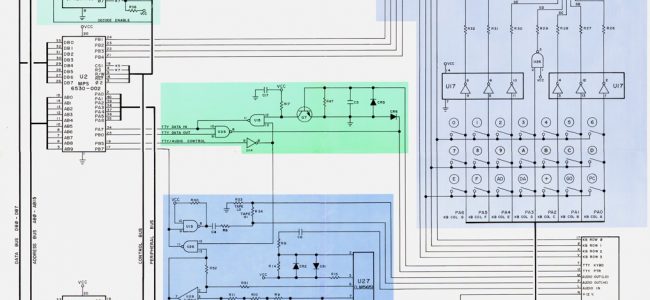
KIM-1 Circuit poster
With every KIM-1 came a large poster with the Circuit Diagram. The circuit stayed the same from 1975 to 1977, but there were version numbers in the lower right corner. See below for what I have as Circuit poster versions.
First I show you the high quality scans of the Circuit Diagram.
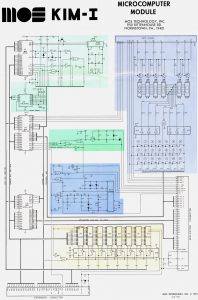 |
KIM-1 circuit diagram Rockwell branded circuit diagram KIM-1 poster in high resolution, large picture! KIM-1 poster in high resolution, cleaned up by Joshy of Forum64 and me (August 2022) KIM-1 poster in high resolution, cleaned up and with wide borders KIM-1 poster in high resolution, scan by Dave McMurtrie |
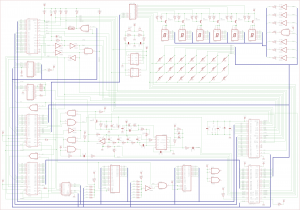 |
Redrawn KIM-1 circuit diagram, Ruud Baltissen |
 |
Redrawn KIM-1 circuit diagram |
Circuit Diagram versions
The size stayed the same, it came as a folded poster. Some on sturdy carton, some on thinner paper. The circuit stayed the same but there were different years and small (version) strings on the right bottom.
Only the 1977 and the Rockwell versions introduced a change: the colors were changed into all blueish.
Here a list of what I have on Circuit Diagrams:
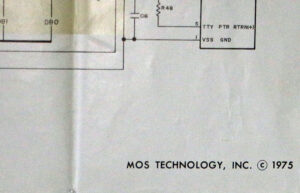 |
1975 |
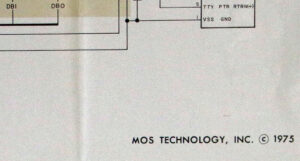 |
1975 |
 |
1976 3.2 m 11-76 |
 |
1976 3.2m 11-76 |
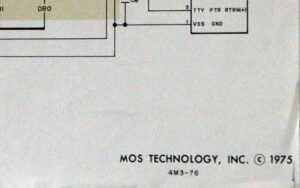 |
1976 4m3-76 |
 |
1977 5m 1-77 |
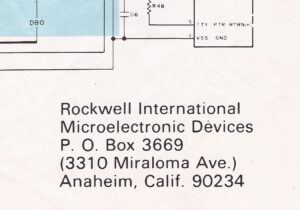 |
1975 Rockwell |

